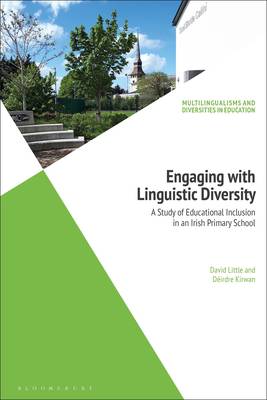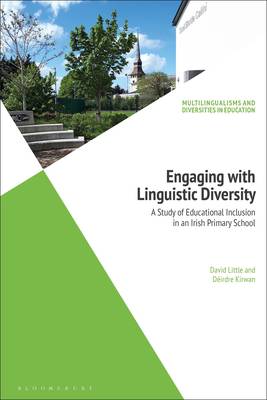
- Afhalen na 1 uur in een winkel met voorraad
- Gratis thuislevering in België vanaf € 30
- Ruim aanbod met 7 miljoen producten
- Afhalen na 1 uur in een winkel met voorraad
- Gratis thuislevering in België vanaf € 30
- Ruim aanbod met 7 miljoen producten
Zoeken
Engaging with Linguistic Diversity
A Study of Educational Inclusion in an Irish Primary School
David Little, Déirdre Kirwan
€ 72,95
+ 145 punten
Uitvoering
Omschrijving
Engaging with Linguistic Diversity describes an innovative and highly successful approach to inclusive plurilingual education at primary level. The approach was developed by Scoil Bhríde (Cailíní), Blanchardstown, as a way of converting extreme linguistic diversity - more than 50 home languages in a school of 320 pupils - into educational capital. The central feature of the approach is the inclusion of home languages in classroom communication.
After describing the national context, the book traces the development of Scoil Bhríde's approach and explores in detail its impact on classroom discourse, pupils' plurilingual literacy development, and their capacity for autonomous learning. The authors illustrate their arguments with a wealth of practical evidence drawn from a variety of sources; pupils' and teachers' voices are especially prominent. The concluding chapter considers issues of sustainability and replication and the implications of the approach for teacher education.
The book refers to a wide range of relevant research findings and theories, including translanguaging, plurilingual and intercultural education, language awareness and language learner autonomy. It is essential reading for researchers and policy-makers in the field of linguistically inclusive education.
After describing the national context, the book traces the development of Scoil Bhríde's approach and explores in detail its impact on classroom discourse, pupils' plurilingual literacy development, and their capacity for autonomous learning. The authors illustrate their arguments with a wealth of practical evidence drawn from a variety of sources; pupils' and teachers' voices are especially prominent. The concluding chapter considers issues of sustainability and replication and the implications of the approach for teacher education.
The book refers to a wide range of relevant research findings and theories, including translanguaging, plurilingual and intercultural education, language awareness and language learner autonomy. It is essential reading for researchers and policy-makers in the field of linguistically inclusive education.
Specificaties
Betrokkenen
- Auteur(s):
- Uitgeverij:
Inhoud
- Aantal bladzijden:
- 216
- Taal:
- Engels
- Reeks:
Eigenschappen
- Productcode (EAN):
- 9781350192492
- Verschijningsdatum:
- 24/12/2020
- Uitvoering:
- Paperback
- Formaat:
- Trade paperback (VS)
- Afmetingen:
- 156 mm x 234 mm
- Gewicht:
- 308 g

Alleen bij Standaard Boekhandel
+ 145 punten op je klantenkaart van Standaard Boekhandel
Beoordelingen
We publiceren alleen reviews die voldoen aan de voorwaarden voor reviews. Bekijk onze voorwaarden voor reviews.








